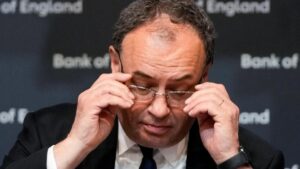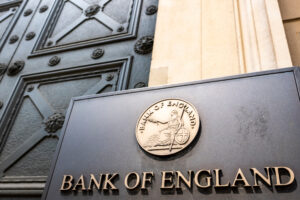British workers poorer than a year ago as real wages fall again

<?xml encoding=”utf-8″ ??>
British workers are on average 3 per cent poorer than they were 12 months ago, official data has showed.
Real wages, the figure for earnings after inflation is taken into account, fell again in February, the Office for National Statistics (ONS) said.
It means British workers are in the middle of the worst two-year squeeze on living standards in more than half a century.
Annual wage growth, excluding bonuses, was 6.6 per cent in the three months to February, increasing from the 6.5 per cent recorded at the start of the year but still below the rising rate of inflation. Average weekly pay including bonuses rose by 5.9 per cent, the same pace as the previous three-month period, the ONS said.
February’s wage figures meant there was a 3 per cent decline in workers’ real incomes over the year, according to the National Institute for Economic and Social Research.
The think tank estimated that public sector workers suffered a larger drop in real wages, averaging at 3.5 per cent, while private sector workers saw their income eroded by 2.8 per cent.
Consumer price inflation jumped unexpectedly to 10.4 per cent on the back of rocketing food prices in February UK inflation stays above 10 per cent. The Bank of England will be closely watching the latest inflation figures for March, which could show a drop to 9.9 per cent, according to a forecast by economists.
Inflation is on course to ease rapidly, as last year’s rise in energy prices since the outbreak of war in Ukraine will fall out of the annual inflation measure calculated by the ONS. Despite the drop in energy prices, investors have increased their bets on another Bank of England interest rate rise next month, to take the base rate to 4.5 per cent.
Unemployment rose unexpectedly in February, official data showed. The Office for National Statistics (ONS) reported that the jobless rate jumped from 3.7 per cent to 3.8 per cent, defying expectations of no change.
The measure of unemployment, which remains close to historic lows, surged as students began to enter the workforce.
The ONS also said the number of people designated as long-term sick hit a fresh record high of more than 2.1 million in the three months to February, compounding the problem of a shrinking workforce.
The UK has been unique among rich countries in suffering from a smaller labour market after the pandemic, with older workers choosing to retire early and others unable to work due to health problems, a factor that has contributed to wage inflation.
The ONS said that despite the rise in long-term sickness, the overall rate of economic inactivity, a measure separate to unemployment, fell in the three months to February. It claimed that the inactivity rate was at 21.1 per cent, a 0.4 percentage point drop in the three months to February.
Labour market data also recorded another fall in real incomes for workers, who since last year have been suffering from the worst inflation rate in 40 years. The data on falling wage growth came as the government remains at loggerheads with public sector workers in a series of pay disputes.
The Conservatives have argued that pay awards above inflation for nurses and junior doctors will only exacerbate the country’s inflationary trouble. Jeremy Hunt, the chancellor, has said that tackling inflation remains at the top of the government’s agenda.
“While unemployment remains close to historic lows, rising prices continue to eat into pay cheques which is why halving inflation this year is one of our top economic priorities,” he said.
Despite a slowing economy, the Bank of England does not expect the unemployment rate to surge as companies are likely to hoard workers rather than lay off staff. Bosses may fear that they will struggle to recruit staff in a shrinking labour market.
The Bank’s monetary policy committee (MPC) has said that it will monitor closely the incoming data on unemployment, wage growth and inflation before it reaches a decision on interest rates next month.
The committee raised rates to 4.25 per cent last month, the highest since 2008. It has hinted, however, that its monetary tightening policy may be coming to an end because inflation is scheduled to fall rapidly in the second half of the year.
Rate-setters are looking for signs that inflationary pressures are becoming entrenched through higher wages or rising company profit margins.
The level of vacancies in the economy, which has been at an all-time high since summer, dropped by 47,000 to 1.11 million, while the employment rate was boosted by the number of self-employed people.
Darren Morgan, the head of economic statistics at the ONS, said that job vacancies had fallen again but were still at very high levels. “Meanwhile pay continues to grow more slowly than prices,” he added. “So earnings are still falling in real terms, although the gap between public and private sector earnings growth continues to narrow.”
The committee is expected to raise interest rates by another 25 basis points next month, with economists speculating that it will be the last tightening after more than 18 months of increasing borrowing costs.
Ellie Henderson, an economist at Investec, the international banking group, said: “On balance, and not without dissent, the MPC will raise the Bank rate by a quarter of a percentage point to 4.5 per cent but that will be the last hike in this tightening cycle. Today’s data arguably supports that call.”




